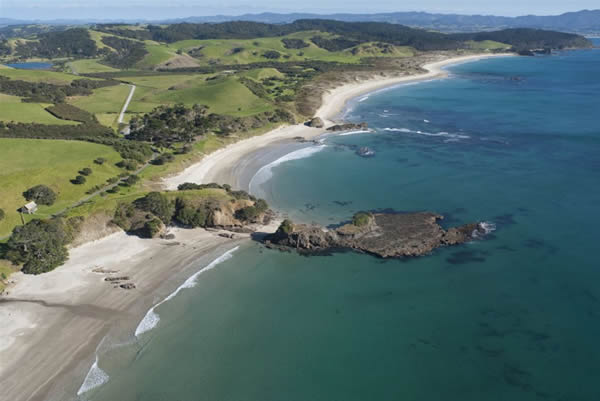Leaping Lizards! liberated native skinks and geckoes alive and breeding

Multiple translocation of native lizards to Crusoe Island. Shore skinks from Tawharanui (Jan, March 2010), common geckoes from Noises Islands to Crusoe and Motuora Islands (Oct 2010) Pacific Geckoes from Hauturu (pending).
Last Friday morning I escaped from a round of seemingly endless Auckland Council meetings to go and do what I used to do a lot of back in the ARC days – I travelled down to Crusoe Island with Auckland Council scientist Melinda Rixon – courtesy Mick Courtnell of the Harbour Master’s office. Our purpose was to carry out a survey to find out whether the shore skinks and common geckoes released onto Crusoe Island last year had survived and hopefully bred.
- 74 shore skinks Oligosoma smithii were released onto the island in January and March 2010.
- 30 common geckoes Hoplodactylus maculatus were released onto the island in October 2010
I am very pleased to report that our mission was successful on all counts.

Baby skink born on Crusoe Island – Melinda prepares to weigh and measure. In background Church Bay, Waiheke Island
After landing on the island and beginning our search we almost immediately discovered a juvenile shore skink and later both adult and juvenile geckoes.
In all during our 2 hour survey we found 8 shore skinks including 2 juveniles and 7 geckoes including 3 juveniles.
I also noted a visible increase in spiders and larger invertebrates like native cockroaches and seashore earwigs suggesting ecological processes on Crusoe Island disrupted by decades of heavy infestation by mice are slowly but surely being restored to full health.
All this is very satisfying and augers well for the long term success of the translocations. One good thing I have found about translocating lizards compared to say bellbirds is that lizards are less prone to fly off into the blue beyond! I would like to now work on transferring Pacific geckoes to Crusoe. Hopefully the island can become an important lizard sanctuary in the inner Hauraki Gulf as well as a useful outdoor laboratory for conservation research.

adult common gecko – transferred to Crusoe from its home on Otata in Noises group late in October 2010. Part of a family group of geckoes found on Crusoe in May 2011
Background information from previous web post: http://52.62.142.163/2010/11/gecko-release-on-tiny-crusoe-island-brings-to-a-close-arc-legacy-programme/
Crusoe or Papakohatu (0.7ha) lies approximately half way between Motuihe and Waiheke Islands. Despite its presence in one of Auckland’s most popular fishing grounds (the Motuihe channel) the island remains in many respects ‘invisible’.
While most conservation attention focuses on the more larger islands like Little Barrier, (Hauturu), Rangitoto, Motutapu, Tiritiri Matangi and Motuihe, it is not generally appreciated that the much more numerous islets (less than 1 hectare in size) of which there are 350 in the Hauraki Gulf alone have significant existing and potential conservation values – especially for seabirds and reptiles.
The release of common geckoes (as well as shore skinks) on Crusoe Island has been a personal project since I first carried out a biological survey of the island as part of my MSc degree in 1996. When I first visited the island in late January 1996, paddling by kayak from Waiheke, I discovered the island had been overrun with mice and its native vegetation infested with Rhamnus alaternus – an especially aggressive pest weed plant. After a false start in 1996 in 2001 I finally managed to eradicate the last mouse from Crusoe.
I always puzzled given the distance of Crusoe from the nearest neighbouring islands how mice ever got there in the first place and by chance recently I came across an account of how a Sanford fishing boat the Olive ran aground on Crusoe Island in October 1949 and as part of the salvage operation everything on the boat had to be unloaded onto the island. This would certainly explain how mice got there. Over recent years Rhamnus and other weeds have been progressively removed from Crusoe Island by ARC Biosecurity staff and myself – with Whakanewha parks ranger Andy Spence and Dan Beauchamp actively involved. The island is now well covered in native coastal forest is in extremely good condition.
The geckoes were collected from Otata Island in the nearby Noises Group by scientist and lizard specialist Melinda Rixon for the ARC. Melinda now works for the Auckland Council. This release was combined with the transfer of 40 other common geckoes from Otata to Motuora Island. Native geckoes are quite unique as they give birth to live young. Common geckoes normally give birth to twins around about March.

Mike Lee, Matt Baber and Melinda Rixon – releasing geckoes on Crusoe Island in October 2010. (Photo Diana Worthy, Gulf News).
Earlier last year, in January and in March we also released a total of 74 native shore skinks Oligosoma smithii on Crusoe. The first release in early January comprised of 33 shore skinks which were were captive-bred at Massey University, Albany Campus in a programme run by Dr Weihong Ji.
The second release in March comprised of 41animals, which were all were collected from Tawharanui Regional Park.
The whole project was managed by ARC Natural heritage scientist Matt Baber (also a lizard specialist).
The lizard releases of 2010 are considered to have an excellent chance of success.
We are very appreciative of the support given by the Neureuter family who own the Noises Islands and of course Melinda who expertly collected the 70 geckoes involved in the double translocation.
To know that Crusoe – small as it is – has been restored to an almost pristine condition and stocked with native lizards is extremely satisfying.
Our application to release Pacific Geckoes from Little Barrier Island on Crusoe was put on hold by Department of Conservation but could happen in the future. Special thanks (again) to Mick Courtnell from the Auckland Harbourmaster office for transporting us and the lizards to Crusoe -and for bringing us back.
PS. On 29 January 2014 I assisted Auckland Council Biodiversity staff to complete the mission, the release of 70 Pacific geckoes (Hoplodactylus pacific us) on Crusoe Island.
For more details on Crusoe Island see: Lee (1999) Biota of Seven Islets off Waiheke Island, inner Hauraki Gulf. Tane 37: 99-136.





